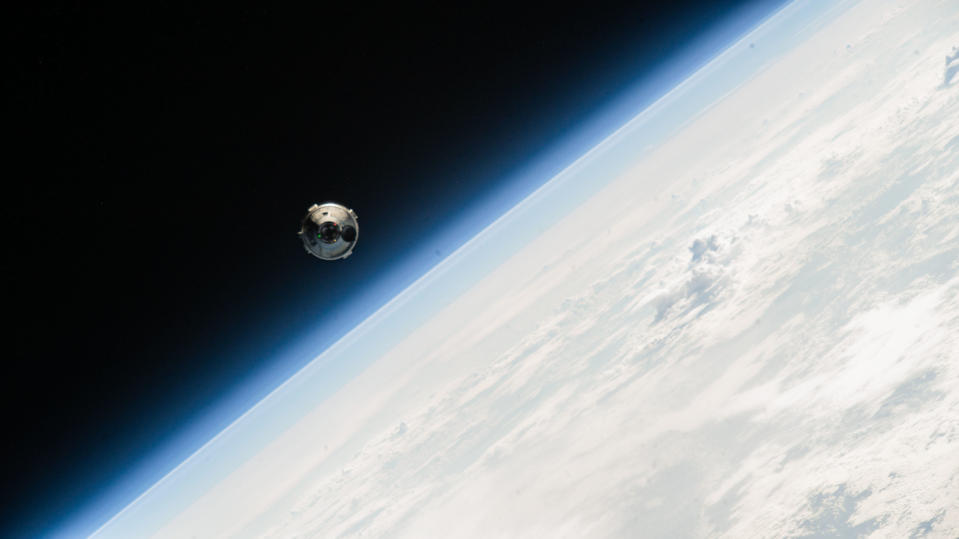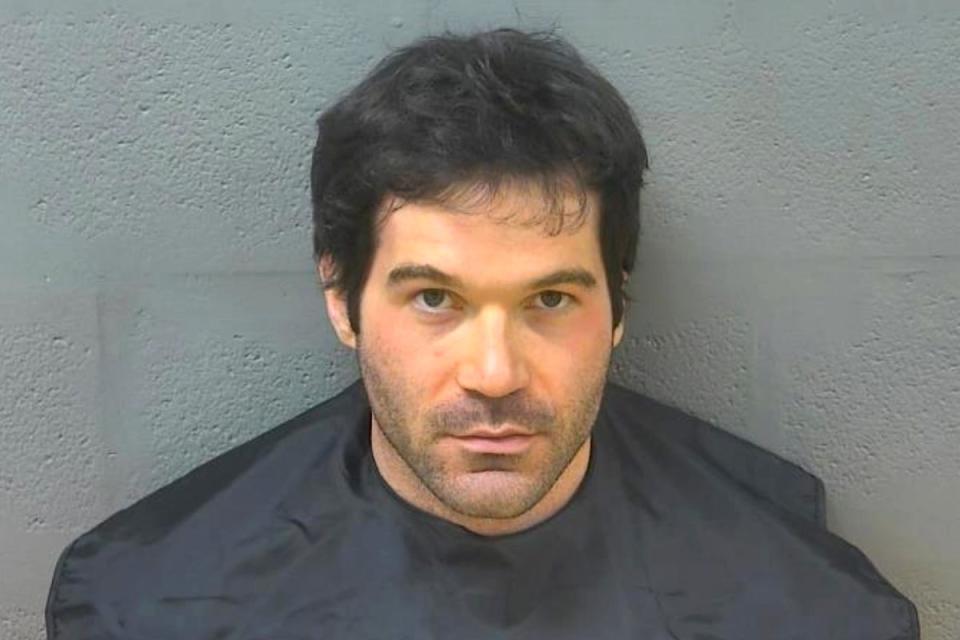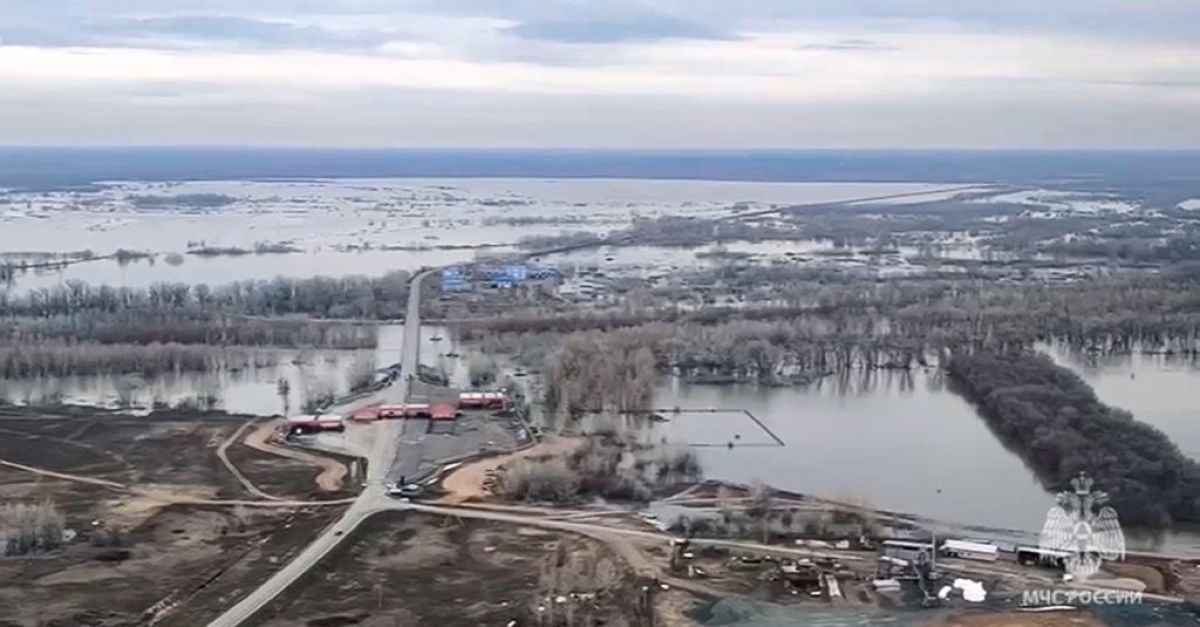May 27—The Air Force Research Laboratory’s Phillips Research Site is a major economic driver for the state of New Mexico.
The site is made up of AFRL’s Space Vehicles and Directed Energy directorates. And both research sites draw other companies to the area for partnerships.
Our guest on this week’s episode of the Tech Outlook podcast is Brian Raspa, the historian for AFRL in Albuquerque.
A native of Los Angeles who previously worked on an ambulance, Raspa has a doctorate from the University of New Mexico and started at AFRL with an internship.
Here’s a sample of the conversation, which has been lightly edited.
Tech Outlook podcasts come out Monday afternoon and can be found on YouTube, Spotify, iTunes and SoundCloud.
To start, can you introduce yourself?
I’m Darren Raspa, and I’m the historian for our local site of AFRL. This is the Philips Research Site of the Air Force Research Laboratory, which consists of space vehicles and directed energy technology directorates. And so my path to AFRL was somewhat circuitous. I started out in school in LA and ended up coming out to the University of New Mexico to complete my doctoral education. And during my last year of study at UNM, I found an internship with the history office on base at the Air Force Research Laboratory. I thought, well, that is unique. I missed the idea of public service, I used to work on an emergency ambulance with LA County Fire, and it had been some time since I had given back in some capacity. And so I thought that would be a great way to combine both my historical skills and public service. So I applied for the internship, came on base to shadow the previous historian for about a year and then took over in 2017.
So the two directorates here our space vehicles and directed energy?
Spaceships and lasers, doesn’t get cooler than that.
So tell us what spaceships and lasers mean as far as the work that goes on at Kirtland Air Force Base?
So the current missions are for space vehicles and directed energy. On the space side, they’re doing research and development in space communications, making our spacecraft smaller. They’re doing research in solar cell technology, deployable solar cell technology, they’re doing research and development in space, weather, quantum, you name it. If it’s related to space domain and awareness of the space environment, we’re doing it here on Kirtland Air Force Basse with space vehicles. Now, on the directed energy side of the house, if it’s related to lasers, microwave research, things like that, optics research, improving how we see space, and how we see our own environment, then that’s what directed energy is focusing on. And both of these two directorates work together in tangent with and independently, as well with the larger services.
Can you give us some of the history? Why are they here in Albuquerque and not somewhere else?
It’s a long story, right? So I always say that the story of space in New Mexico starts thousands of years ago. I always take it back to Chaco Canyon, because that’s where you see the Sun dagger and you see ancient peoples who lived here hundreds and hundreds and hundreds of years ago, analyzing the heavens using the technology they had available. But what really starts to bring modern day researchers and, specifically, Air Force researchers out to New Mexico, once again, is space. It’s actual physical space.
Dr. Robert Goddard developed the first liquid propelled rocket in the 1920s. He’s in Massachusetts, and there’s only so much space in Massachusetts, it’s already very built up in the 1920s. And he realizes he has to get more space to launch his rockets higher and higher. So he comes out here to New Mexico in the 1930s and is able to refine his technology, which is then adopted into V-2 rocket technology. After World War II, we start to test out here in New Mexico. So how did the lab end up here? It starts in Massachusetts in 1945, the Cambridge Research Lab, and their whole job is to analyze the atmosphere, the near-space environment. We knew that after World War II, we were looking to space already. And we were looking to solve the problem of space. How do we get there? How do we stay there? How do we get there safely and stay there safely? We had a knowledge of the upper atmosphere but we didn’t really have a detailed survey of what that environment looked like if we were going to send our spacecraft, and more importantly, our people, up there. We had to make sure that we knew exactly what was going on. And so we launched, from the Cambridge lab, a series of weather balloons, … but we needed somewhere to launch (rockets). So the Cambridge lab, more and more, would come out to New Mexico to do a lot of that testing for high altitude balloon programs. And through that process, the lab mapped the entire jet stream of the continental United States. There is an intense level of knowledge that was gained from what was defense research that was then applied to the larger community that benefited the nation and technology overall.
… In 1952, the Special Weapons Command becomes a Special Weapon Center. But then in 1963, (President) Kennedy says, Well, maybe we shouldn’t be blowing up so many nukes in the atmosphere and near the space environment and in the ocean. So he issues the Limited Test Ban Treaty. And so our group here in New Mexico says, Well, we have to get better at analyzing the nuclear environment without actually detonating items, we have to get smarter, we have to get more agile and resilient. And so they start developing electromagnetic pulse technology. What an EMP is, is that’s what’s generated when a nuclear bomb is detonated. And what an EMP can do is damage electrical systems, it can harm individuals. And so we figured out a way that we can recreate that type of energy synthetically without blowing anything up. And so we developed a whole series of tests where we can drive aircraft onto out facilities and radiate them with EMP pulses to make sure that they’re actually safe for people to fly if there was a case of a nuclear incident.
… All the work we do is on the taxpayer dime. So we always want to look to saving the taxpayer money, right? So making things smaller, more efficient. It’s expensive to get to space, it’s hard to get to space still. And so if you’re making a technology smaller than you’re going to be saving taxpayer dollars as well. And so after the Space Technology Center, you see the Phillips lab arise, and it’s one of these four super labs that arises across the nation. Some of us are studying space, directed energy, some of us are studying armaments, kinetic weapons, some of us are studying propulsion. We’re studying various facets of Air Force technology. And already we were studying directed energy and and space related technology during this early period. And so then in 1997, that’s when you see, finally, the merging of all these super labs doing all these amazing cool things technologically into one Air Force Research Lab. And so we’ve been one lab since 1997.
Darren, when did you know you were going to do what you do?
That’s a good question. Well, in the ambulance, they used to call me the professor, because between calls, I would always sit there with a history book in my hand. And so I always knew that I wanted to do something related to history. I love to read history. And I thought if I’m going to read history, I should want to write history, right? And I think that if I want to write history, I should be the most qualified. So I went back to school, I got all the degrees you could get, because I wanted to be the most qualified.
Signup bonus from



